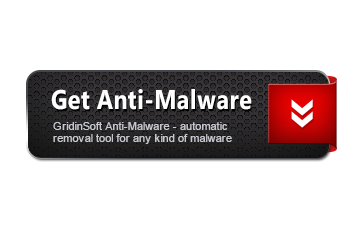The RiskTool.Win32.SecurityXPloded.gb is considered dangerous by lots of security experts. When this infection is active, you may notice unwanted processes in Task Manager list. In this case, it is adviced to scan your computer with GridinSoft Anti-Malware.

Gridinsoft Anti-Malware
Removing PC viruses manually may take hours and may damage your PC in the process. We recommend using GridinSoft Anti-Malware for virus removal. Allows to complete scan and cure your PC during the trial period.
What RiskTool.Win32.SecurityXPloded.gb virus can do?
- A file was accessed within the Public folder.
- Executed a command line with /C or /R argument to terminate command shell on completion which can be used to hide execution
- Sample contains Overlay data
- Uses Windows utilities for basic functionality
- Reads data out of its own binary image
- CAPE extracted potentially suspicious content
- The binary contains an unknown PE section name indicative of packing
- Authenticode signature is invalid
- Uses Windows utilities to create a scheduled task
- CAPE detected the embedded win api malware family
- Appears to use command line obfuscation
- Deletes executed files from disk
- Powershell arguments were seen on a command line but powershell.exe was not called. Likely indictive of renamed/obfuscated powershell.exe or defining arguments in variables for later use
- Uses suspicious command line tools or Windows utilities
- Yara detections observed in process dumps, payloads or dropped files
How to determine RiskTool.Win32.SecurityXPloded.gb?
File Info:
name: 098303C6E72AA4B522E8.mlwpath: /opt/CAPEv2/storage/binaries/3afc9129194ed67f666e81ec1677c10f7c1c83204eda44ffd10c096be3b7a2a1crc32: 6DA59260md5: 098303c6e72aa4b522e88c06e70da029sha1: f0cd04b3d759003bcf1c947f027acefc7ffc0836sha256: 3afc9129194ed67f666e81ec1677c10f7c1c83204eda44ffd10c096be3b7a2a1sha512: 3aa8800ac4beba44a375044b478233f1b803cbc4758a68b0e9e54c9ecc4512e977448651207321a6069bcf7ada3c51d678bf30f60dbc33f14ce2edddf29aee8dssdeep: 98304:wH23QMy3hLASvWD0H23QMy3hLASvWDkttZetEXTsACnD9Rp8zboIeOZeE9jWC4pb:s23AxL23AxbMEXYAQ3W9Sbtype: PE32 executable (GUI) Intel 80386, for MS Windowstlsh: T17E76CF613AD2C036D0621A70853DD6BA91A5BE708F72496B73CC3F3E3B758929531E27sha3_384: 0599af3f57eee4e98a91b47d69b57a39818e622e1db67099da792c84c142b245f584cc59998099fdeeee69e927fc615bep_bytes: e853060000e980feffffcccccc518d4ctimestamp: 2016-03-23 09:36:36Version Info:
CompanyName: SecurityXplodedFileDescription: This installer database contains the logic and data required to install Outlook Password Decryptor.FileVersion: 7.0InternalName: Setup_OutlookPasswordDecryptorLegalCopyright: Copyright (C) 2016 SecurityXplodedOriginalFileName: Setup_OutlookPasswordDecryptor.exeProductName: Outlook Password DecryptorProductVersion: 7.0Translation: 0x0409 0x04b0
RiskTool.Win32.SecurityXPloded.gb also known as:
| Bkav | W32.Common.49F54025 |
| Lionic | Riskware.Win32.SecurityXPloded.1!c |
| tehtris | Generic.Malware |
| Skyhigh | BehavesLike.Win32.Dropper.wh |
| Cylance | unsafe |
| CrowdStrike | win/grayware_confidence_60% (D) |
| APEX | Malicious |
| Kaspersky | not-a-virus:RiskTool.Win32.SecurityXPloded.gb |
| Alibaba | RiskWare:Win32/SecurityXPloded.c1bbfed6 |
| Rising | Downloader.Snojan!8.ECDD (CLOUD) |
| Trapmine | malicious.high.ml.score |
| FireEye | Generic.mg.098303c6e72aa4b5 |
| SentinelOne | Static AI – Malicious PE |
| Kingsoft | malware.kb.a.897 |
| ZoneAlarm | not-a-virus:RiskTool.Win32.SecurityXPloded.gb |
| Cynet | Malicious (score: 100) |
| McAfee | Artemis!098303C6E72A |
| DeepInstinct | MALICIOUS |
| Malwarebytes | RiskWare.SecurityXploded |
| MaxSecure | Trojan.Malware.133076184.susgen |
| Fortinet | W32/PossibleThreat |
| AVG | Win32:FileInfector-A [Heur] |
| Avast | Win32:FileInfector-A [Heur] |
How to remove RiskTool.Win32.SecurityXPloded.gb?
- Download and install GridinSoft Anti-Malware.
- Open GridinSoft Anti-Malware and perform a “Standard scan“.
- “Move to quarantine” all items.
- Open “Tools” tab – Press “Reset Browser Settings“.
- Select proper browser and options – Click “Reset”.
- Restart your computer.



Leave a Comment